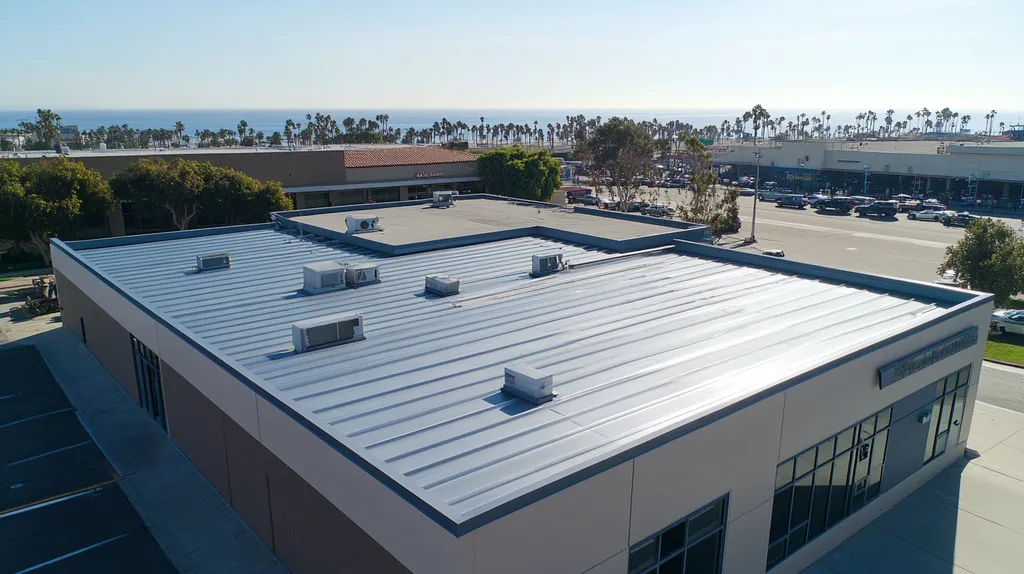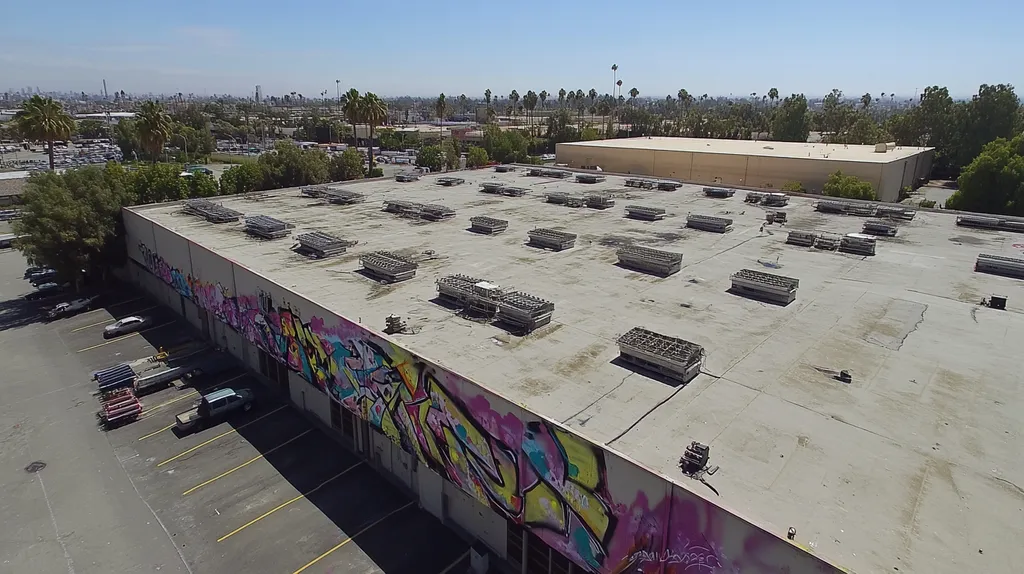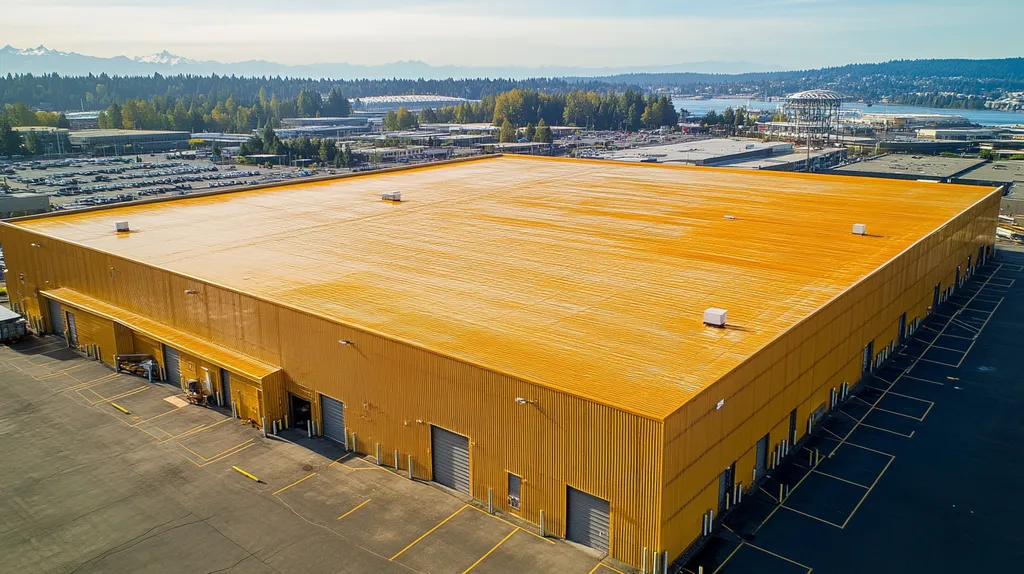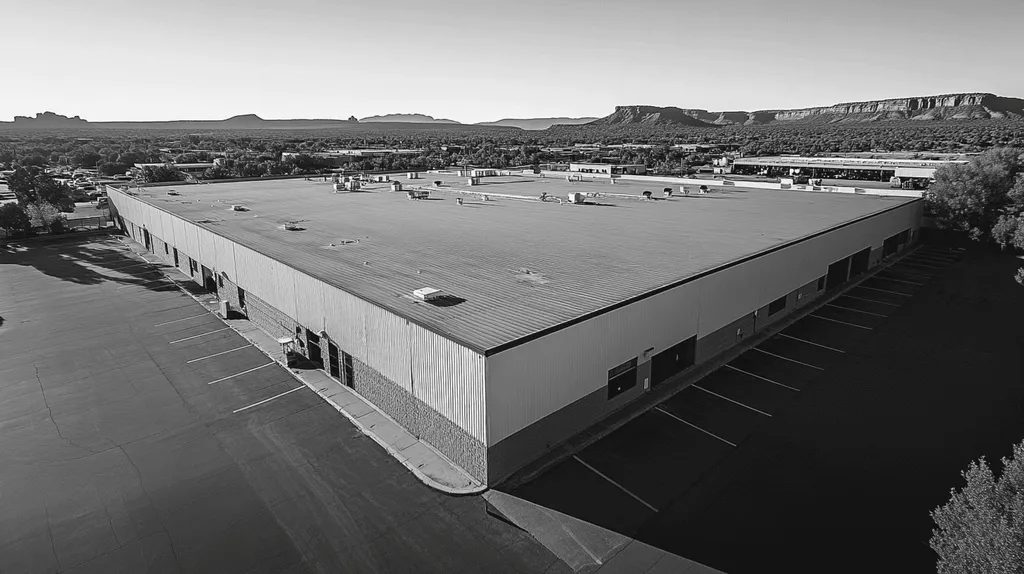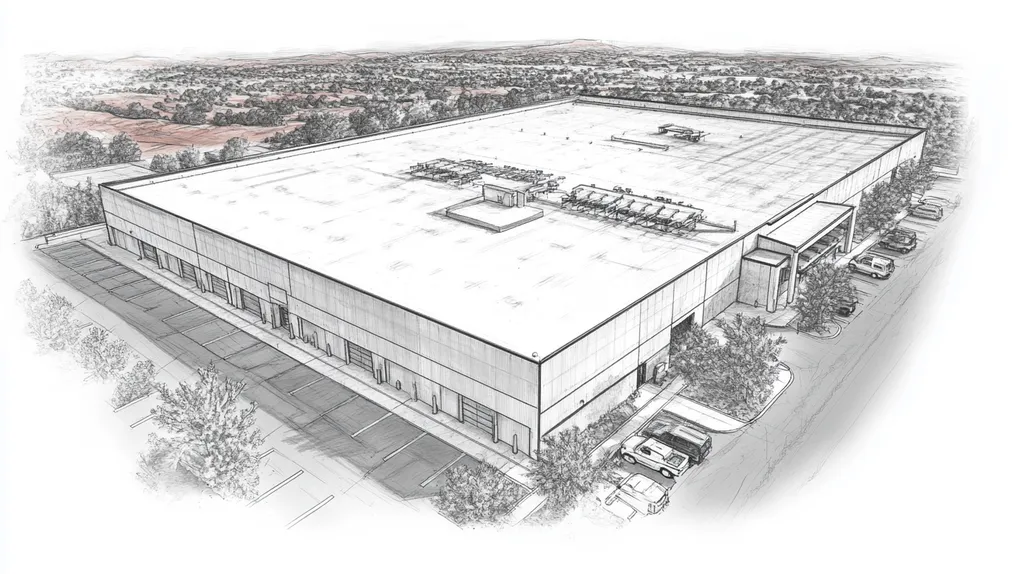In today’s industrial facilities, a failing roof can trigger catastrophic losses exceeding $250,000 in structural damage and operational disruptions. Yet 73% of facility managers still rely on outdated materials that deteriorate faster than modern alternatives.
The emergence of innovative roofing materials promises extended lifespans and enhanced performance, but only when properly evaluated and maintained. Understanding their true lifespan potential requires careful analysis of multiple factors.
This comprehensive guide examines the critical elements that influence roofing material longevity, from initial performance metrics to long-term maintenance protocols, enabling facility managers to make informed decisions that protect their assets.
SECTION 1: PERFORMANCE FACTORS
In the world of industrial roofing, the potential consequences of a subpar roof can be severe. A failing roof may not only halt operations but also rack up expensive repairs and pose safety hazards for employees. With the introduction of innovative roofing materials, it’s crucial to grasp the performance factors that influence their effectiveness. Key considerations include weather resistance, energy efficiency, and the implementation of advanced technologies. By addressing these areas, facility managers can significantly enhance roof longevity and safeguard valuable assets.
Weather Resistance and Durability
Weather resistance plays a vital role in determining the lifespan of industrial roofs. Materials encountered in severe weather—like torrential rain, heavy snowfall, and blazing sun—can suffer significant wear and tear. For example, thermoplastic polyolefin (TPO) roofing is especially known for its excellent UV resistance, often lasting longer than traditional materials such as modified bitumen.
Durability goes beyond just weather exposure; it also includes factors like puncture and tear resistance. Ethylene propylene diene monomer (EPDM) is a standout in this regard, known for its ability to weather the elements effectively, ensuring extended roof integrity. By making the right material choice, facility managers can protect their roofs from damage and lower maintenance expenditures.
Moreover, heavy-duty membranes designed specifically for industrial applications can endure significant foot traffic and environmental pressures. These considerations collectively enhance a roof’s performance and lifespan. Regular inspection and diligent maintenance can further improve durability, yielding long-term benefits in lifecycle costs and operational efficiency.
Key Action Items
Energy Efficiency and Insulation
Energy efficiency in industrial roofing stands as a significant concern, impacting both operational expenditure and ecological footprint. Utilizing advanced insulation materials can greatly improve energy performance; for instance, polyisocyanurate insulation is celebrated for its effectiveness in boosting thermal resistance and reducing energy usage.
Reflective roofing technologies, like cool roofs, also play a critical role in energy savings. These roofs reflect sunlight, leading to lower building temperatures and consequently, reduced cooling costs. Facilities that invest in these technologies benefit financially while adhering to ever-tightening energy regulations.
Moreover, energy-efficient roofs can complement broader sustainability strategies. Incorporating systems compatible with solar technology enables on-site renewable energy generation, showcasing how modern roofing materials contribute to sustainable practices within industrial facilities.
Key Action Items
Advanced Roofing Technologies
The emergence of advanced roofing technologies is transforming the landscape of industrial roofing. Innovations like IoT-driven monitoring systems and self-healing materials significantly bolster roof performance and durability. For instance, smart sensors can alert facility managers to leaks or structural vulnerabilities, enabling timely, proactive maintenance.
Self-healing materials represent a revolution in roof resilience, automatically repairing minor damages. This technology minimizes repair frequency and costs while maintaining the roof’s integrity over the years.
Additionally, the use of drones for roof inspections has changed how facility managers assess roofing conditions. Drones rapidly gather visual data, allowing for swift maintenance decisions without disrupting daily operations.
Key Action Items
SECTION 2: FINANCIAL CONSIDERATIONS
Financial decisions regarding roofing materials can significantly influence the profitability and sustainability of industrial facilities. With a wide range of initial installation costs, it is essential for stakeholders to understand their options fully. While some advanced materials like TPO or PVC may come with higher upfront costs, their long-term savings can be substantial. This section explores initial installation costs, ongoing maintenance expenses, and the cost-saving opportunities associated with modern roofing solutions.
Initial Installation Costs
Evaluating initial installation costs is vital for property owners and facility managers. Although traditional roofing systems may seem economical at first, they often carry hidden expenses that accumulate over time. Innovative materials like thermoplastic polyolefin (TPO) may have a higher initial price but offer excellent durability and energy efficiency that pay off over the years.
Investing in quality insulation can amplify these benefits. Facilities that choose materials designed to reflect solar heat can realize significant savings on cooling costs. Conducting a thorough cost-benefit analysis allows decision-makers to select roofing solutions that fit their financial goals.
Additionally, investing in advanced materials can yield unexpected advantages, such as lower labor costs during installation due to simplified processes. Understanding these financial components ensures that facility managers make informed investments that optimize long-term value.
Key Action Items
Long-Term Maintenance Expenses
Long-term maintenance expenses play a crucial role in roofing financial considerations. Innovative roofing materials typically require less upkeep compared to traditional options, leading to reduced repair costs over time. For example, materials engineered to resist leaks and mold can protect budgets from unexpected financial hits.
Although regular maintenance remains essential regardless of the system, many advanced materials come with warranties that extend their operational life and limit unforeseen expenses. Stakeholders should carefully examine these warranties to fully understand their implications for financial risk.
Embracing technology in maintenance practices can also yield savings. Tools like smart monitoring systems alert facility managers to issues before they escalate, potentially avoiding costly repairs. Predicting and planning for maintenance costs form a vital cornerstone of a sound financial strategy.
Key Action Items
Potential Cost Savings and Incentives
Property owners should actively consider potential cost savings and incentives when choosing innovative roofing materials. Many regions provide tax incentives or rebates for energy-efficient installations, which can help alleviate initial financial burdens. These programs motivate businesses to opt for sustainable solutions that benefit both their budget and the environment.
In addition, energy-efficient materials reduce utility bills; reflective roofs, for example, significantly lower cooling expenses by deflecting sunlight. These immediate savings contribute to a facility’s overall financial health.
Fewer repair incidents and longer lifespans lead to additional cost savings with advanced roofing systems. Facilities that invest in resilient materials often enjoy lower long-term financial commitments. Assessing available grants or financial incentives is essential to maximize these benefits and align roofing choices with overarching financial strategies.
Key Action Items
SECTION 3: COMPLIANCE REQUIREMENTS
Compliance with roofing regulations is not optional—it’s essential for the safety, financial stability, and functionality of industrial facilities. The fallout from ignoring compliance can range from hefty fines to legal struggles, not to mention potential safety risks for employees. Alarmingly, around 40% of building owners face penalties due to overlooked codes. Gaining an understanding of compliance requirements is critical when selecting innovative roofing materials that not only adhere to industry standards but also champion sustainability objectives. This section discusses building codes, environmental certifications, and specific industry compliance needs.
Building Codes and Regulations
Building codes serve as the backbone of safety and durability standards for roofing systems. These regulations can vary based on local jurisdictions but commonly outline requirements for materials, installation methods, and structural support. For example, roofs located in seismic areas must be engineered to withstand earthquakes, which may necessitate the use of advanced materials like reinforced thermoplastic.
Ignoring building codes can lead to costly retrofits or even full roof replacements. It’s imperative for facilities managers to stay well-informed about local regulations and to ensure that any roofing materials chosen align with these standards. While building departments can provide valuable support, proactive research is vital.
Routine inspections and updates are crucial for staying compliant with changing regulations. By utilizing innovative materials that comply with existing codes, facilities can enhance roof longevity and performance.
Key Action Items
Environmental Standards and Certifications
Environmental awareness is increasingly shaping the selection of roofing materials. Certifications like the Energy Star label or LEED accreditation indicate that products meet stringent sustainability criteria. Such certifications can boost the value and attractiveness of a facility.
For instance, roofing materials designed to reflect sunlight can dramatically cut energy expenses; studies reveal they can reduce cooling energy usage by as much as 30%. Adhering to environmental standards often opens doors to rebates and tax incentives.
Additionally, choosing materials that are recyclable or composed of recycled content not only aligns with environmental regulations but also enhances a company’s public image. Facility managers must evaluate both the lifespan and environmental impact of roofing materials within compliance frameworks.
Key Action Items
Industry-Specific Compliance Needs
Each industry has distinct compliance requirements that directly affect roofing material choices. For instance, manufacturing facilities often require roofing systems designed to withstand chemical exposure or extreme temperatures. Adhering to OSHA safety standards is also paramount in those settings.
In healthcare, roofs must comply with rigorous hygiene and safety protocols to prevent contamination. This may mean depending on specialized waterproof membranes or fire-retardant materials that meet stringent health and safety laws.
Neglecting these industry-specific regulations can lead to severe consequences, including operational disruptions and heightened liability risks. Therefore, understanding the details of these compliance needs is essential for all facility managers.
Key Action Items
SECTION 4: RISK MANAGEMENT
Effective risk management is essential for preserving the integrity of industrial roofs. Without a careful assessment, property owners can face significant financial setbacks from roof failures. Research indicates that neglecting maintenance and unexpected weather challenges can accelerate the deterioration of innovative roofing materials by up to 30% faster than expected.
Identifying Potential Failure Points
Spotting potential failure points in industrial roofing systems is critical for effective risk management. Common issues include poorly sealed seams, insufficient drainage, and material wear from UV exposure. Any of these factors can significantly shorten the lifespan of roof materials.
Regular inspections are crucial to catch warning signs before they escalate into major problems. For instance, a simple crack in the roofing membrane could indicate moisture has entered, leading to leaks. Property owners should develop an inspection checklist to track these key areas over time.
Documenting any vulnerabilities and addressing them promptly is vital for preventing further damage. Additionally, using technology like thermal imaging can help identify hidden issues that may not be immediately visible.
Key Action Items
Mitigating Weather-Related Risks
Weather-related events represent a serious risk to the lifespan of innovative roofing materials. Harsh winter conditions, such as heavy snowfall, can place excessive stress on roofs, potentially leading to structural failures if they aren’t designed to withstand such forces.
Implementing protective measures is crucial for mitigating these risks. For example, installing snow guards can help prevent dangerous snow accumulation. Reflective roofing materials can also reduce heat absorption, minimizing thermal stress during the summer months.
Regular maintenance practices, like cleaning out drains and gutters, can mitigate issues caused by rain and debris buildup. This proactive approach helps avoid water accumulation, which can expedite deterioration of roofing systems.
Key Action Items
Insurance and Liability Considerations
Understanding insurance coverage and liability is vital for managing potential risks tied to roofing systems. Many facilities find themselves underinsured, making them financially vulnerable in the event of roof failures. Insufficient coverage can lead to significant losses and costly legal disputes.
Property owners should conduct regular reviews of their insurance policies to ensure they cover specialized roofing materials and unique installation methods. This coverage can be crucial for unforeseen incidents, such as natural disasters or accidents on site.
Additionally, liability considerations play a significant role in risk assessment. If roofing failures result in property damage or personal injury, the consequences can be severe. Implementing strict safety protocols and training staff on proper maintenance can help mitigate these risks.
Key Action Items
SECTION 5: OPERATIONAL PROCEDURES
In the fast-paced world of industrial operations, roofing material longevity can significantly affect a facility’s financial health. Poorly managed roofs can pave the way for costly repairs or early replacements, leading to thousands of dollars lost annually. Establishing effective operational procedures is critical to maximizing the lifespan of innovative roofing materials. This section emphasizes the importance of structured installation, routine maintenance, and proactive repair protocols to extend the life and performance of industrial roofs.
Installation and Commissioning Processes
The installation phase is crucial for ensuring a roofing system’s long-term durability. An expertly carried out installation minimizes potential future problems and maximizes overall performance. It’s essential to engage a certified roofing contractor experienced in using innovative materials.
Following manufacturer specifications is vital to ensure that all components—such as membranes and insulation—function seamlessly together. Incorporating the right ventilation and drainage solutions prevents moisture buildup, which can cause structural issues over time.
Commissioning should include in-depth inspections and performance tests to confirm that the roofing system meets operational standards and works as intended. Documenting this process fosters accountability and provides a reference for future maintenance. Implementing digital tools for tracking installation data can also improve long-term maintenance strategies.
Key Action Items
Regular Maintenance and Inspection
Routine maintenance is essential for maintaining the integrity of any roofing system. Scheduling regular inspections helps detect potential issues before they escalate into costly repairs. Facilities should plan for at least two inspections each year, or more often in regions with extreme weather.
During inspections, it’s crucial to check for signs of wear and damage—like cracks, blisters, or loose seams. Acting quickly on these findings can prevent more extensive damage. Establishing a checklist can simplify the inspection process, ensuring a thorough evaluation.
Maintenance also includes removing debris from the roof’s surface and drainage pathways. Blocked drains can cause water to pool, leading to leaks and material deterioration. Keeping roofing systems clear promotes effective water flow and enhances durability.
Key Action Items
Repair and Replacement Protocols
Having effective repair and replacement protocols is vital for addressing roofing issues promptly and efficiently. Timely repairs of minor damages, such as punctures or loose seams, are essential to avoid extensive damage down the line. Delaying repairs can lead to leaks that jeopardize the entire roofing system.
Facilities should create a clear protocol for evaluating whether repairs are sufficient or if a full replacement is necessary. Key factors to consider include the extent of the damage, the roofing system’s age, and the cost-effectiveness of repair versus replacement.
When replacement is needed, opting for new, innovative materials can provide additional advantages. These materials often offer greater energy efficiency, durability, and lower maintenance requirements, translating to long-term financial gains. Keeping a detailed record of all repairs can help track performance and material lifespan over time.
Key Action Items
SECTION 5: OPERATIONAL PROCEDURES
In the fast-paced world of industrial operations, the longevity of roofing materials can have a significant impact on a facility’s financial health. Poorly managed roofs can lead to costly repairs or premature replacements, incurring thousands of dollars in losses annually. Implementing effective operational procedures is essential for maximizing the lifespan of innovative roofing materials. This section emphasizes the need for systematic installation, routine maintenance, and proactive repair protocols to extend the life and performance of industrial roofs.
Installation and Commissioning Processes
The installation phase is critical for ensuring the durability of any roofing system. A well-executed installation not only minimizes future issues but also maximizes overall performance. To achieve this, it’s essential to hire a certified roofing contractor with experience in innovative materials.
Strictly following manufacturer specifications during installation is vital to ensure all components work seamlessly. Proper ventilation and drainage systems must be integrated to prevent moisture buildup, which can lead to structural damage over time.
Additionally, the commissioning phase should incorporate thorough inspections and performance tests. This verifies that the roofing system functions as intended and meets operational standards. Documenting this process is crucial for accountability and serves as a reference for future maintenance strategies.
Using digital tools to track installation metrics can enhance this process further. These tools offer data-driven insights that can inform ongoing maintenance plans, ultimately extending the lifespan of the roofing system.
Key Action Items
Regular Maintenance and Inspection
Routine maintenance is key to preserving the integrity of any roofing system. Regular inspections help identify potential issues before they escalate into more significant problems. It’s advisable for facilities to schedule inspections at least twice a year, or more often in extreme weather areas.
During inspections, checking for signs of wear—such as cracks, blisters, or loose seams—is essential. Prompt action on any findings can prevent extensive damage and costly repairs in the future. A standardized checklist can streamline the inspection process and ensure thorough evaluations.
Maintenance tasks should also include regularly clearing debris from the roof surface and drainage pathways. Clogged drains can lead to pooling water, increasing the risk of leaks and material degradation. Keeping roofing systems free of obstructions promotes effective water flow and enhances durability.
Implementing a robust maintenance plan can not only preserve roofing materials but also boost energy efficiency, as well-maintained roofs help regulate building temperatures and reduce energy costs.
Key Action Items
Repair and Replacement Protocols
Effective repair and replacement protocols are crucial for promptly addressing roofing issues. Timely repairs of minor damages, such as punctures or loose seams, are essential to prevent more extensive damage. Delaying these repairs can lead to leaks that compromise the entire roofing system.
Facilities should create a clear protocol for determining whether a repair is necessary or if a full replacement is warranted. Key factors for consideration include the extent of damage, the roofing system’s age, and the cost-effectiveness of repair versus replacement.
When replacement is needed, opting for newer and innovative materials can provide added benefits. Many of these materials offer enhanced energy efficiency, durability, and lower maintenance demands, resulting in long-term savings.
Documenting all repairs and the roof’s condition over time is essential. This documentation can inform future decisions and help track the performance and lifespan of roofing materials.
Key Action Items
The Bottom Line
With over $250,000 at risk from roof failures and 73% of facilities still using outdated materials, the urgency for adopting innovative roofing solutions has never been greater.
The lifespan of modern roofing materials hinges on three critical factors: proper material selection based on facility-specific needs, rigorous compliance with installation and maintenance protocols, and proactive risk management strategies.
Advanced materials like TPO and EPDM, when properly maintained, can extend roof life by 20-30 years while reducing energy costs by up to 30%.
As regulations tighten and weather patterns become more extreme, facilities that invest in innovative roofing materials and implement comprehensive maintenance programs will realize significant operational and financial advantages.
The future of industrial roofing lies in embracing these innovations while maintaining strict adherence to established best practices.
FREQUENTLY ASKED QUESTIONS
Q. What performance factors impact a commercial roof’s lifespan?
A. Performance factors such as weather resistance, energy efficiency, and durability play critical roles in determining the lifespan of a commercial roof. Choosing materials that excel in these areas can enhance longevity and protect your assets, preventing costly repairs and operational disruptions.
Q. How do installation costs affect the choice of industrial roofs?
A. Initial installation costs are crucial when selecting industrial roofs, as they can significantly impact long-term profitability. Although advanced materials may have higher upfront costs, they often provide savings through better durability and energy efficiency. A thorough cost-benefit analysis helps in making informed decisions.
Q. What compliance requirements should I consider for a commercial roof?
A. Compliance requirements for a commercial roof include adhering to local building codes, environmental certifications, and industry-specific regulations. Meeting these standards prevents legal penalties, ensures safety, and supports sustainability efforts within your facility.
Q. How can I identify risks associated with my industrial roof?
A. Identifying risks involves regular inspections to spot potential failure points like poor drainage or material wear. Technology such as thermal imaging can help detect hidden issues, while monitoring for weather-related impacts can mitigate risks before they escalate into costly problems.
Q. What operational procedures support the longevity of an industrial roof?
A. Effective operational procedures include following proper installation guidelines, scheduling regular maintenance, and documenting repairs. Establishing clear protocols for addressing damage ensures timely interventions that can prevent expensive replacements and improve the overall lifespan of the roof.
Q. How does energy efficiency impact my industrial roof’s expenses?
A. Energy efficiency significantly affects your roof’s operating costs by reducing energy usage and lowering utility bills. Investing in energy-efficient materials can lead to substantial savings, making your industrial facility more sustainable and cost-effective over time.
Q. What are the benefits of using advanced roofing technologies?
A. Advanced roofing technologies, including IoT systems and self-healing materials, improve durability and minimize repair needs. These innovations can drastically enhance roof performance, providing real-time monitoring and proactive maintenance approaches, ultimately extending the roof’s lifespan and reducing costs.


